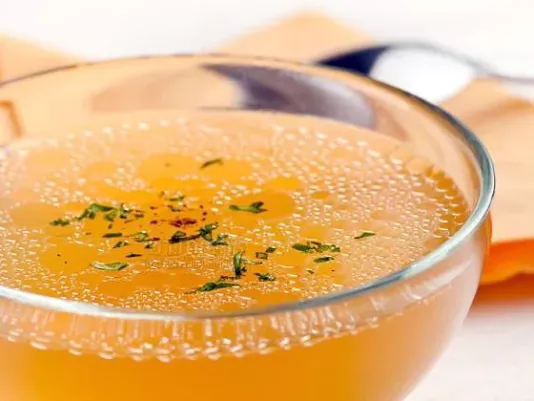Stuffed Pattypan Squash
Stuffed pattypan squash – when you look at pattypan squash, it looks like a flower-vegetable and the first thing that comes to mind is to stuff it with something to preserve this natural beauty.

Broth is an ingredient that I consider the foundation of culinary art. Over many years of cooking, I became convinced: without quality broth, no complex dish can reveal its potential. In my practice, I always start with proper broth preparation, because it creates the base of flavor. In my family, we always cooked different variations – meat, chicken, vegetable – and each had its own purpose. Over the years, I perfected the technique of slow simmering to achieve both clarity and richness. My experience shows that temperature and cooking time are critical: boiling too quickly makes broth cloudy, while too short a time makes it bland. I especially value the moment when the aroma of fresh vegetables and spices intertwines with meaty notes and creates that very “skeleton” of the dish.
Over many years of cooking, I learned to make meat broth that is both clear and flavorful. In my practice, I always start with quality bones and cuts of meat, as they form the foundation. My experience shows: for rich taste, it’s important to first roast or bake the bones – this adds depth and color. In my family, we always added carrots, onions, and celery to broth: they create a balance between sweetness and delicacy. I especially value the long process of slow simmering, when broth gradually gains strength over low heat. Sometimes the dish can fail if you let the broth boil rapidly – then it becomes cloudy. I always skim the foam to achieve a clean taste. Over the years, I became convinced: proper meat broth is not just liquid, but a true base for soups, sauces, and even casseroles. My experience proves: quality broth is the key to success for any complex dish.
In my practice, chicken broth became the ingredient that always saves the day in everyday cooking. My experience shows: the best result comes from free-range chicken, as it provides special richness. Over many years of cooking, I learned to use not only meat but also bones, wings, and necks – they add aroma and structure. In my family, chicken broth often served as the base for light soups, especially when someone was sick, as it restores strength and provides warmth. I especially value adding parsley root and bay leaf – they emphasize the delicacy of chicken. It’s important to remember: too many spices can overpower the natural aroma, so I use a minimum of seasonings. Sometimes I leave a little fat on the surface – it creates a gentle protective layer and makes the dish more filling. Over the years, I became convinced: chicken broth is universal, it can be served on its own or used as the base for dozens of dishes.
My experience shows: without good broth, it’s impossible to create true sauces. In my practice, broth often became the component that makes gravy tender and harmonious. Over many years of cooking, I realized: the key is in proper reduction. For example, the French sauces I studied always start with a base in the form of broth, which is reduced to the needed concentration. In my family, we often made gravies for meat and poultry using meat or chicken broth. I especially value the method of gradual reduction: it allows you to concentrate the flavor and make it richer. It’s important not to rush and to ensure the sauce doesn’t burn. Sometimes, if the broth is too weak, I add a few drops of wine or a bit of cream for balance. My experience proves: a good sauce always starts with the right broth.
In my practice, vegetable broth repeatedly saved the day when I needed to cook something light yet nourishing. My experience shows: even without meat, you can create a rich base. Over many years of cooking, I perfected the combination of carrots, onions, celery, and herbs that form a harmonious taste. In my family, vegetable broth often served as the base for diet soups or porridge. I especially value its clarity and lightness: it doesn’t overload the body but provides a fragrant foundation. It’s important not to overcook the vegetables – then the broth will stay clear and pleasant in taste. Sometimes I add dried mushrooms – my experience shows this gives it extra depth. Over the years, I became convinced: vegetable broth can be just as expressive as meat broth if you choose the ingredients correctly.
Over many years of cooking, I became convinced that broth is a universal ingredient present in many world cuisines. In my practice, it became the base for Italian risotto, French sauces, Asian soups, and even Mexican braising sauces. My experience shows: regardless of the region, the principle is the same – broth gives the dish foundation and depth. In my family, we always loved experimenting: once I cooked Thai soup on chicken broth with coconut milk, and the result exceeded expectations. I especially value the ability to adapt broth: it can be light or concentrated, clear or thick. It’s important to consider the culture of seasonings: in Europe, they add herbs, in Asia – spices and ginger root. Sometimes a dish can fail if the broth is too salty, so I always season at the end. My experience proves: broth is a bridge between cultures that makes cuisine universal.